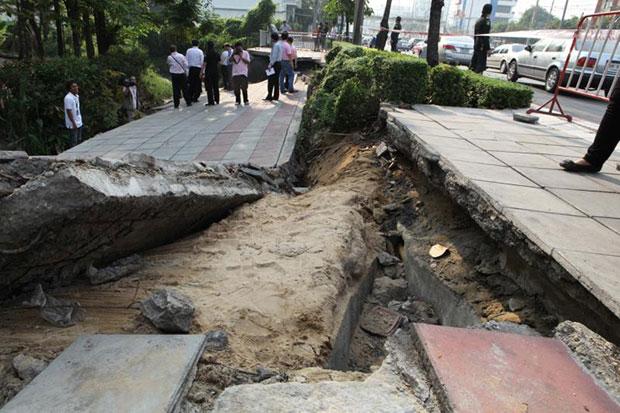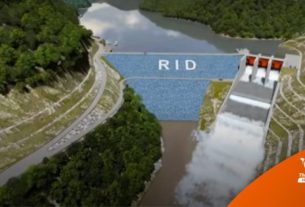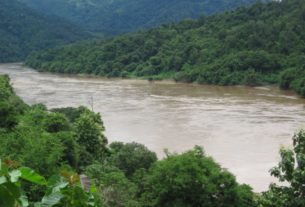Ramkhamhaeng subsiding at 2cm per year

This section of a footpath on Rama III Road near Khlong Bang Khlo collapsed after land beneath it subsided in April 2012, after years of erosion along the banks of the canal. (Bangkok Post file photo)
Bangkok is sinking an average 10mm per year and the subsidence could reach a critical level unless the problem is tackled, a leading water engineer warned on Friday.
Groundwater extraction, the natural movements of the earth’s crust and construction of high-rise buildings were factors that caused Bangkok to sink, Sujarit Khoonthanakulwong, head of Chulalongkorn University’s water resources engineering department, said.
He was speaking at a seminar on measures to deal with high tides and land subsidence in the capital, hosted by the National Reform Council on Thursday.
Ramkhamhaeng Road has the highest rate of subsidence, 2cm per year, followed by Lat Krabang (1cm). On average, the capital and environs were sinking at 10mm a year.
Coastal areas in nearby Samut Sakhon and Samut Prakan provinces were also eroding, he said.
Unless relevant laws were strictly enforced, Bangkok would be at high risk being flooded in 30-50 years, he said.
He suggested that national reforms focus on amendments of laws on zoning areas for water retention and town planning. Penalties must be increased for illegal use of groundwater.
Sornchai Tovanichakul, director of the analysis and research division of the Bangkok Metropolitan Administration’s public works department, said the BMA already has measures in place to deal with the problem, including controls on construction of houses and buildings no more than 12 metres high in areas prone to flooding.
Parts of building construction areas must be set aside to retain water until it can be released into waterways, Mr Sornchai said.
The BMA has already dredged water drainage canals, built flood embankments along the Chao Phraya River and seven giant flood tunnels, and set aside 26 areas as monkey-cheek flood retention ponds.
To prevent coastal erosion, bamboo walls were built along natural coastlines as protection against waves and trees were planted in mangrove forest areas, he said.
Source: http://www.bangkokpost.com/news/general/597616/bangkok-sinking-10mm-every-year

